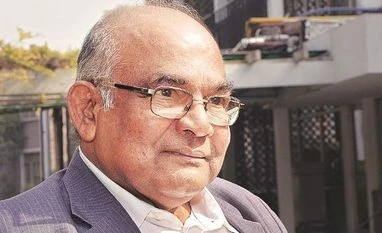There has been some debate in India recently on whether the regulatory function of Financial Market Infrastructures (FMI) should continue with the Reserve Bank of India (RBI). There have been recommendations by some committees that there should be an independent payments system regulator. There have also been recommendations that all financial markets (including money, forex and government securities, equities and commodities) should be with a unified market regulator and moved out of the RBI.
The world over the central bank as the monetary authority, creates and destroys money and is also the lender of last resort, and hence is the designated payments system regulator. Over the years in India too it has been so, and there does not seem to be any compelling reason to change the same.
As regards FMIs that are dealing with clearing and settlement functions, the issue of who should be the regulator of the FMI obviously depends on who is the regulator of the underlying instruments traded in these markets. The money, forex and government securities markets were in general regulated by the central banks in advanced countries till the 1980s. It is true that these countries have moved away in the 1980s from this model. But after the global crisis there is a rethink on the regulatory architecture, both in theory and practice. At this stage, therefore, there is no compelling reason to move in a direction where there is uncertainty.
The advantages of central clearing have by now been well understood both in the stock exchanges and in the over the counter (OTC) markets. The new technology that could potentially challenge the concept and practice of central clearing is what is known as the Distributed ledger technology, or DLT, as it is called.
The bitcoin is one example of using blockchain or DLT. Blockchain is essentially a database that provides proof of who owns what at any given moment and an immutable record of all transactions, and as all parties to a set of transactions are able to maintain a record of the same, it removes the need for a separate intermediary. It is, in other words, a distributed ledger. A vast, globally distributed ledger running on millions of devices, it is capable of recording anything of value. For the first time in human history, two or more parties, be they businesses or individuals who may not even know each other, can forge agreements, make transactions and build value without relying on intermediaries such as banks to verify their identities, establish trust or perform the critical business logic — contracting, clearing, settling, and record-keeping.
There are three dimensions in which this technology is expected to work.
First, to replace physical currency. Bitcoin is an example of this. Several central banks are also looking at how they can eliminate the use of physical cash with cryptocurrencies. The Scandinavian central banks seem to be active in the movement to abolish paper currency. DLT could potentially replace paper currency (banknotes), allowing central banks to open accounts to all individual economic non-financial agents such as households and corporations.
The second way in which DLT could work is for settlement of financial transactions. I understand that several large exchanges are exploring DLT-based solutions to improve existing post-trade processes for clearing and settling trades made on exchanges. The Monetary Authority of Singapore (MAS) in Singapore, has, I understand, set up a Smart Financial Centre and is developing PoCs for use of DLT for real-time gross settlement and cross-border settlement. Apparently, they are exploring this for trade finance and central bank to central bank settlements. I believe that they are also engaging with the other central banks in the region.
In September 2017 the Bank of Japan and the European Central Bank released the findings of their joint research project on the possible use of DLT for financial market infrastructures. In the findings published last month, they concluded that g?iven the relative immaturity of the technology, DLT is not a solution for large-scale applications at this stage of development.
The Reserve Bank of Australia has similarly set up a research group to study blockchain, DLT, its uses and implications. I understand that the Bank of England is also working with fintech companies with a view to understanding the kind of applications under development and their implications for financial markets, and in turn, to lend the firms an insight into the kind of legal or regulatory challenges that the applications
could pose.
The third way could be for non-financial transactions. Examples where applications are being tested are cloud storage, smart contracts, anti-counterfeiting, digital identity, supply chain, art and ownership, prediction markets and Internet of Things.
While it would appear that at the current stage, DLT is not a threat to central clearing in the immediate future, FMIs and regulators in India could do well to keep monitoring the developments and also engage in some pilots while carefully assessing? the applicability from time to time.
Excerpts from the inaugural Dr R H Patil Memorial Lecture delivered by former Reserve Bank of India governor Y V Reddy in Mumbai on October 27
Unlock 30+ premium stories daily hand-picked by our editors, across devices on browser and app.
Pick your 5 favourite companies, get a daily email with all news updates on them.
Full access to our intuitive epaper - clip, save, share articles from any device; newspaper archives from 2006.
Preferential invites to Business Standard events.
Curated newsletters on markets, personal finance, policy & politics, start-ups, technology, and more.
)